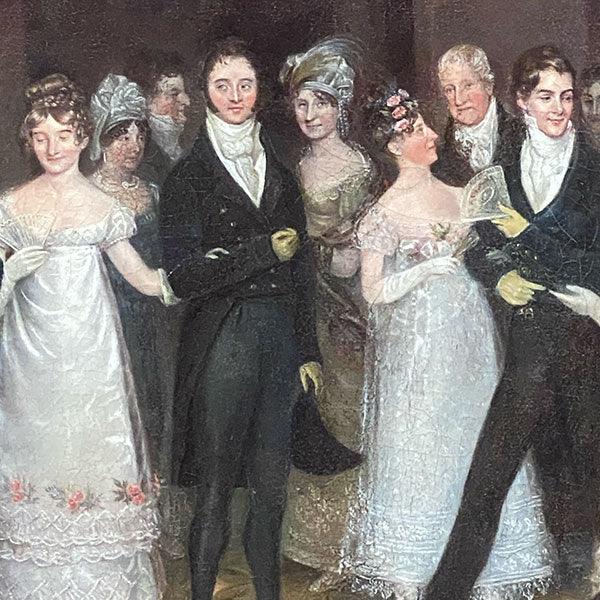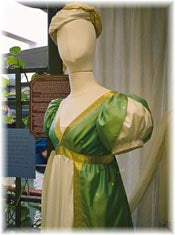Gloves
"I was very lucky in my gloves--got them at the first shop I went to...and gave only four shillings for them; upon hearing which everybody at Chawton will be hoping and predicting that they cannot be good for anything, and their worth certainly remains to be proved; but I think they look very well. Jane Austen, 1813
During the 19th century, ladies always wore Regency gloves outside (so did gentlemen). In addition, they wore them for the most part indoors as well (always at balls, for instance). Made of cotton or kid, they were protection for the hands against dirt and the elements. According to Margery Wilson's Pocket Book of Etiquette, "A glove of the same color as the sleeve makes the arm look longer. A contrasting glove seems to shorten it. Gray, beige and white regency gloves are equally appropriate for any costume with which these colors will harmonize. Black gloves are smart always. Young people wear many colors in gloves to match any tone in their costumes. A woman does not remove her gloves when she is calling, unless she accepts either food or drink which would necessitate their removal. If she is wearing long gloves as part of her formal costume, she removes them before going to dinner and carries them with her, putting them on again afterward if she wants to do so. If one's gloves are merely a covering for the hands, they may be removed with the cloak." Varying in length, the most popular styles during the regency were: long- for formal dinners and balls (strictly white); gauntlet- for riding and winter; and short, palm length gloves for everything else (gardening, walking, etc.) Enjoyed this article? Visit our giftshop and escape into the world of Jane Austen for gloves and mitts.




Leave a comment
This site is protected by hCaptcha and the hCaptcha Privacy Policy and Terms of Service apply.